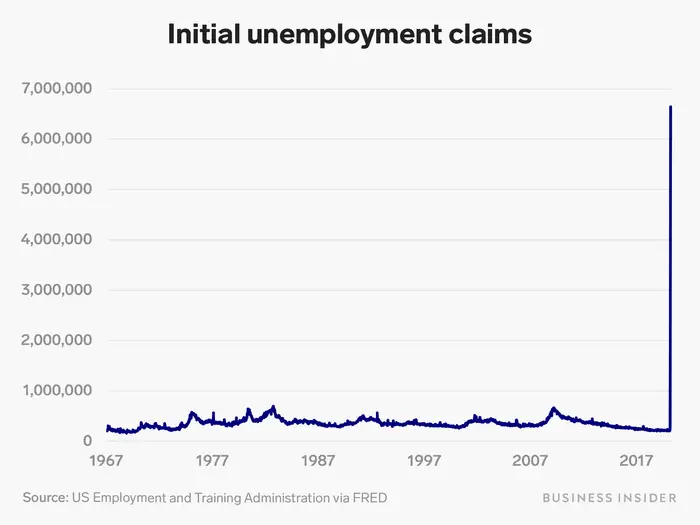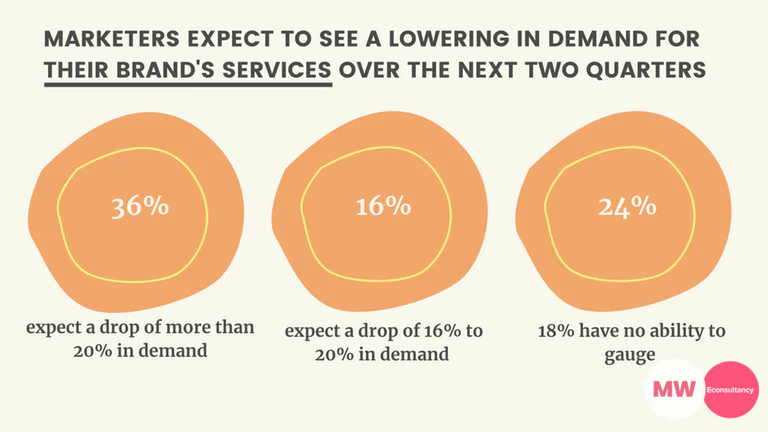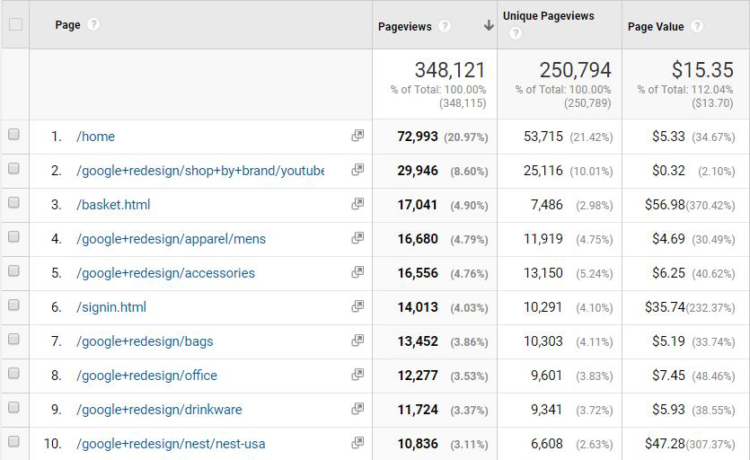5 Ecommerce Marketing Strategies to Use in a Downturn

The COVID-19 pandemic has plunged the world economy into an unprecedented downturn.
Countless businesses have been forced to close their doors in order to slow the spread of the virus, cutting off millions of consumers from their primary source of income. Indeed, graphs depicting recent job losses show less of a slope and more of a straight vertical line.

Your online store will need to adapt to the fact that consumers won’t have as much money to spend for the foreseeable future. Below, we’ll review some techniques that you can use to optimize your marketing strategy for today’s economic climate.
5 Strategies for Ecommerce Marketing in a Downturn
With less money coming in, many businesses have responded by reducing their marketing budgets.
During the Great Recession of 2008-2009, ad spending in the U.S. fell by 13%. More recently, a Marketing Week survey found that 39% of marketers experienced less demand for their services after the outbreak of COVID-19, while an additional 61% expect to see less demand in the next two quarters.

While trimming your marketing expenses (as well as other areas of your budget) may be unavoidable, making deep cuts would be a mistake. This situation calls for a scalpel, not a machete.
In some ways, marketing is more important now than ever. Less demand means there are fewer dollars to fight over, so your advertising and page design will need to be especially effective in order to stand out from the competition and win over new customers.
You should also consider that advertising will never be more affordable. Many other businesses will be making drastic cuts to their ad spending, and advertising platforms will generally respond to this trend by reducing their rates — making more focused and moderate cuts instead will allow you to reach more people at a lower cost than ever before.
There’s a lot of opportunity to gain market share in a downturn as well. Customers that have long been loyal to other brands will suddenly be taking a close look at their household budgets and reevaluating all of their spending habits.
If you pull back hard on your marketing, you may never be noticed when customers are making these evaluations. Conversely, if you maintain a strong marketing presence, you’ll stand a good chance of peeling away customers from your competitors.
So, instead of indiscriminately cutting your marketing budget, you should use the following five marketing strategies during a recession.
1. Maintain Market Research
In particular, one area of your marketing budget that you shouldn’t touch in a recession is your market research.
You’ve likely already done some research into the kind of people who tend to visit your site. You already know who you should be targeting based on age, occupation, income and other demographics.
But you can go ahead and throw out everything you thought you knew about customer behavior. This downturn is going to change everything.
There are many different ways that people will respond to this recession. Some will crack down on their spending and only buy essentials for the time being. Others will reduce their spending, but still indulge in buying things they don’t absolutely need on occasion. Still others (likely those who already had a high-income job that can be done from home) will keep spending like nothing has changed.
With so much up in the air, it’s especially important for you to research what’s going on with your customer base.
2. Practice Retargeting
In a downturn, you need to get the biggest return you can out of each dollar you spend on advertising. One of the most effective ways to accomplish this goal is to target people who’ve already made a purchase on your store before — this marketing method is known as “retargeting.”
It’s easier to persuade a previous customer to make another purchase than it is to convince someone who’s never heard of you before that your products are worth their money. After all, a previous customer already trusts your brand enough to have made at least one purchase. With new prospects, you need to build that trust from scratch.
Most advertising platforms have built-in features for retargeting. For example, Facebook offers the Facebook Pixel, which is a small piece of code that you can install on your site to collect visitor data for retargeting campaigns.
3. Analyze and Track
Another method for squeezing the most value out of your marketing budget is to meticulously track the performance of your campaigns. That way, you’ll quickly know which campaigns you should drop to cut costs and which campaigns are worth what you’re spending on them.

In addition to reviewing the analytics reports provided by Shopify, BigCommerce or whichever ecommerce platform you use, take advantage of Google Analytics as well. One particularly helpful resource within Google Analytics is the Page Value metric, which shows you how much each page on your site is contributing to your revenue.
4. Focus on High-Performing Products
You should also use analytics to determine which of your products are generating the most interest from your advertising efforts. If a product just isn’t catching people’s attention, your money would be better spent on promoting more popular products instead.
In fact, you should consider cutting such products from your store altogether. It doesn’t make any sense to waste resources on slow-moving inventory in lean times like these.
Don’t stop developing new products, though. This is an excellent time to push forward with product development. Many of your competitors are likely spending less on innovation, so you can easily set yourself apart with a new product launch.
5. Emphasize Value
Whether it’s a new product or an existing product, the language in your marketing materials must emphasize value over all else.
The pharmaceutical company Bayer took this lesson quite literally when they rolled out a new slogan for one of their products during the Great Recession: “That’s value. That’s Aleve.”
The logic of this technique is clear. Consumers will strongly consider factors other than cost, such as appearance and high-end features, when they’re confident about their long-term finances. But when they’re not so confident, consumers will be most concerned about the value of the purchases they’re considering.
While the most direct way to display value is to advertise deep discounts on your products, highlighting indirect cost-saving features such as durability and loosening the requirements for free shipping will also show customers that they can save money by using your store.
If you decide to lower your prices, make sure you don’t lower them too much for too long. There are likely other businesses in your industry that have always sold their products at low prices. When you try to raise your prices back up after the downturn, your customers might decide that they’d rather stick with the new price point rather than stick with you.
One solution to this problem is to introduce a “fighter brand,” which is a low-priced version of your products under a different name. This allows you to meet customers where their finances are at during a downturn without distorting how people perceive your standard brand.
For example, in the double dip recession of the 1980s, Charmin launched the Banner and Summit brands of low-cost toilet paper. When the economy was stronger at the end of the decade, Charmin discontinued these brands.
By emphasizing value and utilizing the other techniques listed above, you’ll be able to come out of this downturn in the best position possible.

Adam Ritchie
Adam Ritchie is a writer based in Silver Spring, Maryland. He writes about ecommerce trends and best practices for Shogun. His previous clients include Groupon, Clutch and New Theory.



